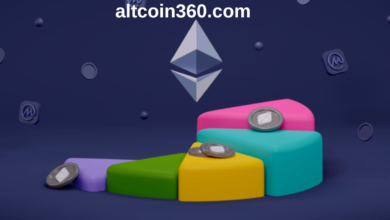Sotheby’s NFT Sale: A Glimpse into the Future of Art and Collectibles

Introduction of Sotheby’s NFT Sale
In recent years, the world of art and Sotheby’s NFT Sale collectibles has been undergoing a digital revolution, and at the forefront of this transformation are Non-Fungible Tokens (NFTs). These unique digital assets have disrupted traditional notions of ownership and provenance, offering artists and collectors new ways to create, buy, sell, and trade digital art and collectibles. Sotheby’s, one of the world’s most prestigious auction houses, has not been immune to this wave of change. In this essay, we will explore Sotheby’s foray into the world of NFTs, examining the implications of their NFT sales for the art and collectibles market.
The Rise of NFTs
To understand the significance of Sotheby’s NFT sales, we must first grasp the meteoric rise of NFTs themselves. NFTs, or Non-Fungible Tokens, are unique digital assets that are recorded on a blockchain. Unlike cryptocurrencies such as Bitcoin or Ethereum, which are fungible and interchangeable, NFTs represent ownership of a specific digital item. This uniqueness and scarcity have given rise to a digital art and collectibles market worth billions of dollars.
NFTs have disrupted traditional notions of ownership and provenance by offering a secure and transparent way to prove ownership and authenticity of digital assets. This innovation has opened up new opportunities for artists, creators, and collectors alike.
Sotheby’s NFT Sales: A Game-Changer
Sotheby’s, founded in 1744 and known for its auctions of priceless physical art and collectibles, recognized the potential of NFTs early on. The auction house conducted its first NFT sale in April 2021 when it partnered with digital artist Pak for the “Natively Digital: A Curated NFT Sale” event. This groundbreaking sale featured works of digital art and collectibles, including “The First 5000 Days” by Beeple, which fetched a staggering $69.3 million.
The success of Sotheby’s inaugural NFT sale sent shockwaves through the art world and established the auction house as a major player in the NFT space. It signaled a significant shift in the art market, with traditional institutions like Sotheby’s embracing digital assets as valuable and collectible. This move also reflected the changing tastes of collectors, who were increasingly looking beyond traditional paintings and sculptures.
Exploring the Implications
1. **Democratization of Art Ownership**
One of the most profound implications of Sotheby’s NFT sales is the democratization of art ownership. NFTs allow anyone with an internet connection to own a piece of digital art or collectible, breaking down barriers that previously limited art ownership to a privileged few. This shift in ownership has the potential to redefine the art market by broadening its reach and appeal.
2. **Digital Art as an Investment**
The success of NFT sales at auction houses like Sotheby’s has turned digital art into a legitimate investment opportunity. Collectors and investors now view NFTs as assets that can appreciate in value over time, much like traditional art and collectibles. This has attracted a new class of investors to the art market, further fueling its growth.
3. **Challenges in Provenance and Authentication**
While NFTs offer a transparent and tamper-proof record of ownership, challenges in provenance and authentication persist in the digital art world. Sotheby’s and other auction houses must navigate these issues to maintain the integrity of the market. Ensuring the authenticity of digital artworks and their chain of custody is essential to building trust among collectors.
4. **The Role of Digital Artists**
Sotheby’s NFT sales have elevated digital artists to a new level of recognition and financial success. Artists like Beeple, whose work sold for millions, have become household names. This newfound prominence raises questions about the future of art and the evolving role of artists in the digital age. As digital art gains mainstream acceptance, traditional distinctions between art forms may blur, and the definition of “art” itself could undergo a transformation.
5. **Environmental Concerns**
The environmental impact of NFTs, particularly those on the Ethereum blockchain, has been a subject of debate and concern. The energy-intensive process of minting NFTs has raised questions about the sustainability of the digital art market. Sotheby’s and other stakeholders in the NFT space must address these concerns to ensure the long-term viability of NFTs as a medium for art and collectibles.
6. **The Evolution of Auction Houses**
Sotheby’s embrace of NFTs represents a significant pivot for traditional auction houses. As they adapt to the digital age, auction houses must develop new expertise in blockchain technology, digital art, and NFTs. This evolution will likely shape the future of auction houses, influencing the types of items they sell and the way they conduct auctions.
7. **Regulatory and Legal Challenges**
The NFT market is still relatively new and evolving, which has led to regulatory and legal challenges. Sotheby’s and other players in the NFT space must navigate these issues, including copyright, taxation, and intellectual property rights, to ensure the market’s legitimacy and stability.
The Future of NFTs in the Art Market
Sotheby’s NFT sales have undeniably had a significant impact on the art and collectibles market, but what does the future hold? The continued success and growth of NFTs in the art world will likely depend on several factors:
1. **Innovation in NFT Technology**
Advances in NFT technology, such as layer 2 solutions to reduce energy consumption and improve scalability, will be critical for the long-term viability of NFTs. Solving environmental concerns and enhancing user experiences will be crucial for NFTs to maintain their appeal.
2. **Education and Awareness**
Educating collectors, artists, and the general public about NFTs and their potential is essential. As more people understand the benefits and risks associated with NFTs, the market can mature and evolve in a sustainable way.
3. **Regulation and Governance**
The NFT market will likely see increased regulation to address legal and ethical concerns. Proper governance and industry standards can help build trust and credibility in the market.
4. **Integration with Traditional Art**
The boundary between traditional and digital art may continue to blur as artists experiment with hybrid forms of expression. Auction houses like Sotheby’s will play a pivotal role in showcasing these evolving art forms.
Conclusion
Sotheby’s NFT sales represent a pivotal moment in the art and collectibles market, ushering in a new era of digital ownership and creativity. These sales have democratized art ownership, transformed digital art into a viable investment, and raised questions about authenticity, environmental impact, and the evolving role of artists.
As NFTs continue to evolve, the art world must adapt to this digital revolution. Auction houses like Sotheby’s will need to balance tradition and innovation, navigate regulatory challenges, and champion new forms of art. The future of NFTs in the art market is still uncertain, but their impact is undeniable, shaping the way we create, buy, and collect art in the 21st century.
You May Also Read This: Choosing the Best Ethereum Casino for Your Needs





Chunky platform sneakers paired with a statement backpack showcase a playful and youthful style, ideal for exploring city streets, attending music concerts, or hanging out with friends.
When looking for shoes that are both fashionable and affordable, Cheap Jordans and Yeezy Shoes 350 are both ideal choices. Pairing these two shoes with different styles of coats can create a sense of layering and is suitable for all seasons. Such a combination is not only practical, but also makes your daily look more fashionable and enhances your overall temperament.